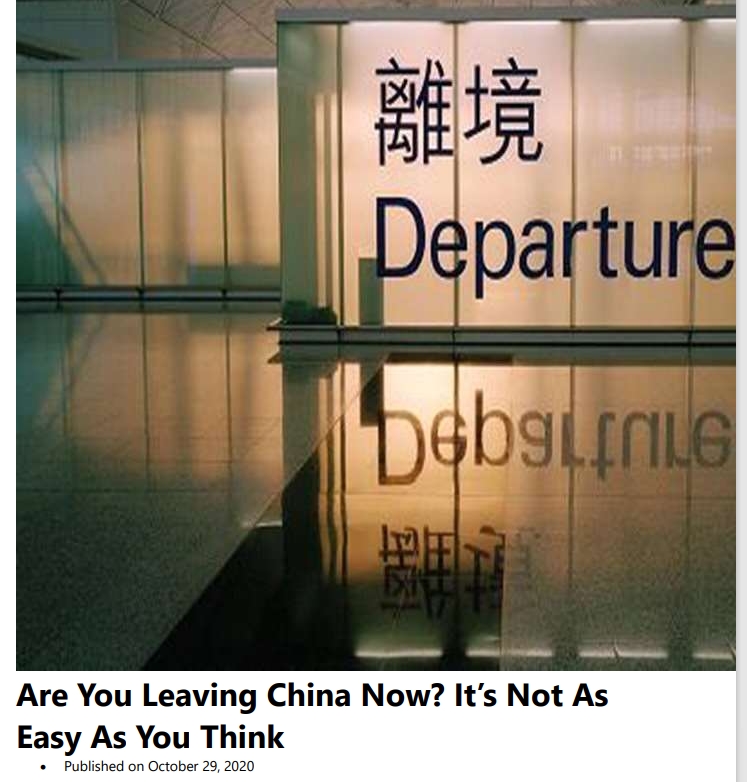

이 기사는 최근 중국에 제조 공장을 운용하고 있는 스피커 제조업체에 대한 경영 컨설턴트 인 Rosemary Coates의 자세한 설명을 옮겨 놓은 특별 기사입니다. 관심 있는 회사들은 참조해 주시기 바랍니다.
무역 전쟁이 시작된 이래 지금은 대유행이 제조업체들의 “Reshoring”은 비즈니스에서 뜨거운 주제입니다. Reshoring은 미국 전역의 최고급 직원회의 및 이사회 회의에서 논의되는 비즈니스의 뜨거운 주제가 되고 있다.
Reshoring은 종종 중국을 떠나 다른 저비용 국가를 찾거나 제조업을 미국으로 송환하는 것을 포함하고 있다. 그러나 전액 출자한 해외 자회사 (WOFE)든 계약 제조업체든 공급 업체든 중국에서 사업을 추출하는 것은 생각만큼 쉽지 않다.
고려해야할 중국 규정, 수수료 및 위험이 많아지고 있다. 이전도 이것에 대해 언급한 일이 있지만 최근에는 중국에서 철수 하고 져 할때 똑같은 실수를 하는 많은 회사가 있는 것 같다. 이 기사를 원문으로 기재 하오니 관심 있는 분들은 참조해 주시기 바랍니다.
Are You Leaving China Now?
It’s Not As Easy As You Think
By Rosemary Coates- Management Consultant
Our work helping companies reshore manufacturing has increased significantly since the beginning of the trade wars, and now the pandemic. Reshoring is a hot topic in business, discussed in C-level staff meetings and Board meetings throughout America.
Reshoring often involves leaving China on a quest for finding another low-cost country or in re-patriating manufacturing to America. But extracting business from China, whether it is your wholly-owned foreign subsidiary (WOFE), a contract manufacturer, or a supplier, isn’t as easy as you might think. There are a whole host of Chinese regulations, fees, and risks to consider.
I have written about this before, but lately, there seem to be a lot of companies making the same mistakes when trying to extract themselves from China.
Our work helping companies reshore manufacturing has increased significantly since the beginning of the trade wars, and now the pandemic. Reshoring is a hot topic in business, discussed in C-level staff meetings and Board meetings throughout America.
Reshoring often involves leaving China on a quest for finding another low-cost country or in repatriating manufacturing to America. But extracting business from China, whether it is your wholly-owned foreign subsidiary (WOFE), a contract manufacturer, or a supplier, isn’t as easy as you might think.
There are a whole host of Chinese regulations, fees, and risks to consider. I have written about this before, but lately, there seem to be a lot of companies making the same mistakes when trying to extract themselves from China.
Your Supply Base If you are manufacturing in China, your supply base for raw materials and parts is most likely also in China. It is important to consider that when you are reshoring manufacturing, you will need to encourage your suppliers to reshore, too.
The other alternative is to rebuild your supply base in the U.S. We coach our clients that this process can take 12-18 months. Until then, you will have to import production parts and may have to pay the 301 China penalty tariffs on these imports.
IP Theft In Other Countries If you are looking to run away from IP theft problems in China, beware of what you are running toward. IP theft isn’t an isolated problem just in China.
Many countries throughout the world have weak IP laws that won’t protect you. Counterfeit products come from countries throughout Asia, the Middle East, and more recently Africa.
And if you haven’t registered your own Trademark in China, take note. Many Chinese companies will register your trademark and then use it after you leave the country, and there isn’t much you can do about it.
The manufacturing IP, tools, and molds you leave behind will likely be used to continue the manufacturing of your products when you leave. It’s going to be very difficult, if not impossible,













